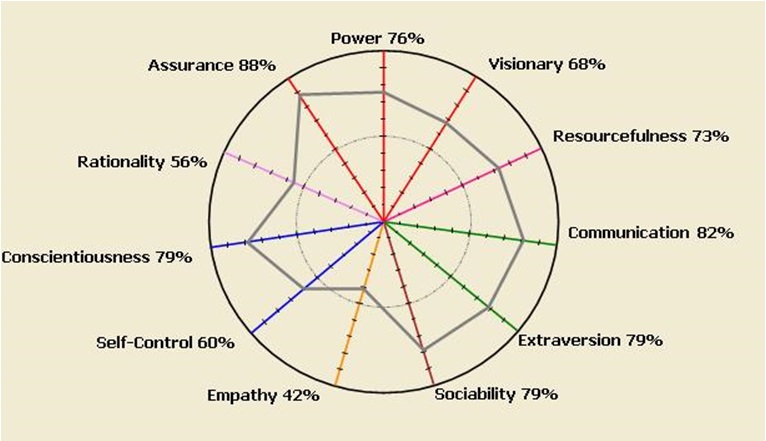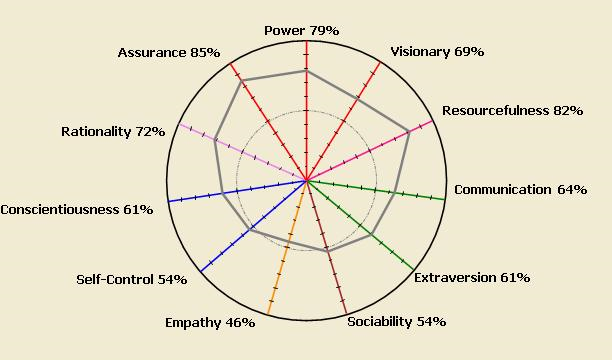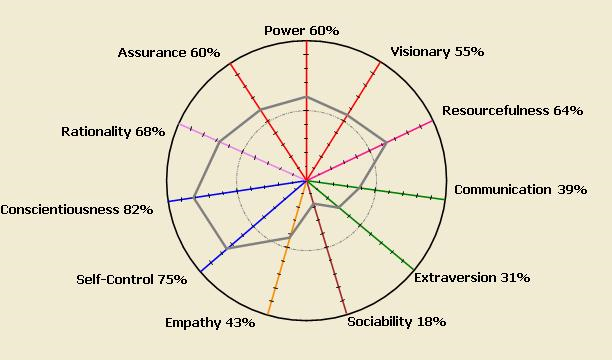Introduction
This project report reflects on the experience of our group on a visit to the Mount Everest. The report is developed in response to a problem seeking to determine how a team could be made to access the top of this mountain during hard times and with fewer risks. The evaluation and analysis in the report follows a four-step model developed by a novelist, Christopher John (Mallik et al, p288). The first section provides a detailed discussion of the experience I obtained from the group project and the possible factors that led to this experience. The essence of a common objective of a group (Enciso, 2010, p.7) is illustrated.
The next section provides a reflection on the roles that I played in the team, how they were executed, and the factors that affected the decision making process in the group. The other section defines the other options that could be adopted and their probable consequences in relation to the group project. The last section illuminates the learning outcomes from the project. It provides a description on the skills that have been developed and the influence they will have on my relationship with others.
Our team consisted of four individuals that were very well known to each other. A typical team is characterized by the presence of more than one person, a common objective and proper ways of coordination (Erdem & Polat, 2010, p.2). The individual characteristics and capabilities had been known for long and this formed the basis for assigning the individual responsibilities within the group. The small figure appeared to positively influence the success of our organization due to a possibility in making quick resolutions given the fact that the task was to reach the peak of the mountain during the difficult times.
Experience
Developing an effective group that can perform a particular task can be challenging, owing to the supposed diverse composition of the group. The success of the group project will depend on a number of characteristics within the team. As John Adair, the first Professor in Leadership Studies observed, creativity and innovation should be encouraged among the group members and appropriate implementation strategies laid down (Adair, 2007, p.6).
The leadership skills demonstrated by the leaders, the understanding of diversity that is witnessed within the group, and the ability of the individuals members of the group to relate with each other are some of the fundamental factors underlying the success of a given group project. Dealing with the conflicts that may arise due to the diversity is one of the key to success of the team (Correia, 2008, p.2)
I had a very positive experience of the team project with little problems arising outside the mandate of the team members and team official. We had forecast the financial requirement of the project and had sought for assistance. This was granted, though not in accordance to what had been budgeted. We then had to cut down certain activities preliminary to the project. The qualities and experience in the leaders and team members favored teamwork and providing a solution to an emerging issue was not a very big deal. Owing to the unpredictable difficult situations that were bound to occur, the team laid strategies that would manage the deviations as they are encountered.
I can state categorically that the project worked out nearly as was expected. The events that were ignored due to financial constraints were fixed and no significant activity was left untouched. Coordination of activities was very simple taking advantage of the numbers.
There are a number of factors that contributed my experience and the success of our project. The overall performance of a group will be affected by the individual personal attributes of the members of the group (Kelly, 1998, p.8). This will in turn affect their relationship within the group thereby affecting problem solving and decision-making processes. Our team was constituted by individuals that had advanced knowledge and skills and were familiar with one another. The officials were selected based on their capabilities and little or no conflicts were recorded because of the ability to develop a resolution. The leaders’ inclusion of all the members in the activities and processes of the group was a key contributor to the success as innovative ideas were welcomed at times of difficulties during the project (Kelly, 1998, p.9). The small number of the group also allowed a condensed and reduced objective frame for the team.
Reflection
The small number of our group members did not necessitate a wide leadership composition and so some roles had to be assumed. In developing and maintaining the group, we used the Tuckman model of Forming, Storming, Forming, and Performing and were able to assign relevant roles (Enciso, 2010, p.34).The group only decided to have two leading roles with the other two members as facilitators. There was the team leader and the team coordinator. I was the team coordinator and was charged with the responsibility of coordinating and facilitating the activities of the group during the execution of the project. These are some of the core components teamwork quality (Hoegl & Gemuenden, 2001, p.3). In particular, I was responsible for the planning and coordination of activities and ensuring proper time management. Our project was sponsored by an individual not within the team.
In effect, I had the typical role of a public relations representative and had to represent the team in liaising with the sponsor. Before the project was carried out, we had to make several meetings to develop the strategic procedures for the project and develop team cohesion that is necessary for our success (Daft & Lane, 2007, p.303). I made arrangements for these meetings and then assisted the team leader with the support from the other two members in developing appropriate mechanisms for accomplishing our task.
In coming up with our team, we analyzed the individual personality with respect to the Jung Typology Profile for Workplace (JTPW). A typical JTPW is shown by the radar below. All the properties are evaluated for every individual in the team.

The four of us sat down and I was chosen to perform this role due to the qualities and experience I possessed that much the requirements of a team coordinator. Most of us have the desirable team qualities like flexibility, trust, and openness (Stevens & Campion, 1994, p.2). Firstly, I have widely demonstrated leadership skills and I am able to develop good relations with the public as quick as possible. I had shown this earlier and I was one of the factors contributing to the success of the project. I was able to lure a sponsor into supporting our project. I have been able to work independently with no supervision and easily get along in teamwork.
Previous responsibilities have enabled me develop interpersonal and organizational skills that are key to this somehow administrative role. Professional training is also a requirement for such responsibilities (Adair, 2007, p.107). A short professional training in project management that I had undergone was important in the planning and monitoring the activities of the project. My role often overlapped with the roles of the team leader but this did not yield a conflict in that such a position is made to provide assistance and lower the burden of entire team management on the team leader.
The figures in the above radar will be different for the positions to be held in the team with leadership positions requiring more power, resourcefulness, and assurance than the subordinates as illustrated by the following radars


The success of a group project merely depends on the behavior of the components of the group. It basically involves no monetary expenditure to develop the procedures for implementing the essentials of project team (Cox, 2011). The composition of a team will influence the ability of the members of the team to pull together towards the achievements of the objectives, a factor that largely contributes to the success of the group. The individual members of the group need to develop communication and collaboration skills that arte essential for developing a relationship with the others in the group (Cox, 2011).
Individuals in a given set up have different abilities and different approaches to problem solving process. In this view, the different roles of individuals in a group need to be assigned in a matter that helps obtain an optimal output. The individuals’ responsibilities should be matched with the respective capabilities. This is the criterion that was used in coming up with the two leaders in our group. It is then necessary that every member recognizes and respects the roles that the others play and their contribution towards the overall success of the group project (Cox, 2011).
Diversity in character and behavior of individuals is often a threat to the success of a group project. In most cases, the individuals that possess the qualities that are necessary for some key roles in a group do possess different behaviors. The coming together of such individuals can often lead to conflicts (Cox, 2011). It is, therefore, necessary that the team members be first trained in ways of managing diversity by observing certain values (Cox, 2011). However, the issue of diversity in individual character and behaviors was not a threat in our case owing to the small number of group members and the familiarity we had with each other.
Besides, group members would be motivated if their contributions towards the objectives of the group are recognized. Every member of the group should be given certain responsibility (Cox, 2011). The team leader and I greatly consulted with the other two members and the contribution of every individual was encouraged and highly welcomed. The members were free to provide their opinions in the issues discussed (Parker, 2008, p.19). Every member of the team actually takes pride in the overall achievement that we had as a team.
Time is one of the important resources that a group has towards a project. Proper time management is thus a necessity and I was able to develop a plan schedule for all the activities to be accomplished in the project. Communication within a given group is essential for proper decision-making (Hirokawa & Poole, 1996, p.20). Effective communication among the members and the understanding of each other’s strengths and weaknesses enabled my proper coordination and we were able to reach the top of the mountain in time.
The number of the members of a given group will affect the decision-making and problem solving processes in a group. A group that consists of many individuals is likely to experience the above-mentioned diversity that impedes decision-making processes. Developing good relations within a group and the coordination of the group’s activities become difficult as the number of the group members increases (Cox, 2011). Managing the number was not a problem in our group. Not very many controversial issues were raised during the development of appropriate steps of carrying out the project.
Alternative courses of action
In as much as the small number of group members enhanced coordination and the decision making processes, I tend to believe that adding two or three individuals to the team would lead to better results. Some roles were barely bestowed on the two principles like financial planning that impeded our overall performance. Additional members to the team would relieve us of certain responsibilities improving the individual performance. It would also bring in new ideas from which a strategic approach could be developed. The additional number would help me develop skills of coordinating a relatively larger group as managing a larger group would require more leadership power and skills (Adair, 2007, p.10). There would be an increased diversity among the individuals in the group and this would give an opportunity to develop better relations with the others. I could then get an opportunity to interact and liaise with more sponsors and this could improve the overall outcome of the project.
Learning
One of the important lessons that I learned from the project is that unless it is completely necessary, the number of members comprising a particular group should be kept so as to enable quick operations of activities of the group. Decision-making process and coordination within a small manageable group is very easy. The importance of teamwork has also been evident. An activity is easily developed and executed with a team as compared to what an individual could accomplish alone (Adair, 2007, p.105; Levi, 2010, p.11). Besides, it has emerged that the conditions do not always turn out to be as had been considered in the planning stage. As the coordinator, I have realized that there is a need to be dynamic, flexible, and able to handle the situations as they arise (Levi, 2010, p.11).
Involving every member of the group in the activities with each one charged with certain roles enable the members to feel part of the group and promote their overall output (Parker, 2008, p.19). Any possible conflict is identified before it is too late (Fenn & Gameson, 1992, p.96). The contributions of every member need to be recognized and appreciated especially by the leaders as a way of motivating the members. Encouraging team cohesion and minimizing conflicts among the members of the team should be main concern of the leaders, as this will determine its effectiveness (Daft & Lane, 2007, p.303). There is need to clearly define the respective roles of the members of the team in a manner that avoids conflicts among them. There are additional skills such as negation, that were developed and that can be applied in future encounters. Group dynamics and interdependence among the group members are some core skills that I developed (Paris et al, 2000, p.1).
Conclusion
It is important to note that the success of team depends on the composition and the kind of leadership within the team. The behavior of the individuals and their ability to perform the assigned responsibility will determine the overall achievement of the group objectives. The roles of the members should be assigned in relation to their abilities and in a manner as to avoid conflicts. Care needs to be taken to ensure that the significant responsibilities are assigned and that there is no overlap of roles as this is the cause of conflicts. The spirit of unity and cohesion should be developed in the members and there should be endowed with a sense of belonging to the group. Every member needs to feel part of the group.
Reference List
Adair, J., 2007. Leadership for Innovation: How to Organize Team Creativity and Harvest Ideas. London: Kogan Page Publishers.
Cox, A. 2011. 5 Essentials to Project Team Success.Web.
Correia, A., 2008. Team conflict in ICT-rich environments: Roles of technologies in conflict management. British Journal of Educational Technology, Vol.3 No.1, 18-35. Web.
Daft, R. and Lane, P., 2007. The leadership experience. Thompson South-Western: Cengage Learning.
Erdem, O. and Polat, S., 2010. Team analysis. E-journal of New World Sciences academy, Vol.5, No.3. Web.
Enciso, R., 2010. Complexity: A model of collaboration in complexity for management in times of uncertainty and change. Web.
Fenn, P. and Gameson, R., 1992. Construction Conflict Management and Resolution. London: Taylor & Francis.
Hirokawa, R. and Poole, M., 1996. Communication and group decision-making. London: Sage Publications.
Hoegl, M. and Gemuenden, H., 2001. Teamwork Quality and the Success of Innovative Projects: A Theoretical Concept and Empirical Evidence. Organization Science, Vol.12, No.4, 435-449. Web.
JTPW personality radar for Teamwork, Web.
Kelly, G., 1998. Team leadership: five interactive management adventures. Hampshire: Gower Publishing Limited.
Levi, D., 2010. Group Dynamics for Teams. 3rd ed. London: SAGE.
Mallik, M et al. 2009. Nursing Knowledge and Practice: Foundations for Decision Making 3rd Ed London: Elsevier Health Sciences
Paris, C. et al. 2000. Teamwork in multi-person systems: a review and analysis. Ergonomics, Vol. 43, No. 8, 1052- 1075. Web.
Parker, G., 2008. Team players and team work: new strategies for developing successful collaboration. San Francisco: John Wiley and Sons.
Stevens, M. and Campion, M., 1994. The knowledge, skill and ability requirement of teamwork: Implications for Human Resource Management. A Journal of management, Vol. 20 No.2, 503-530. Web.